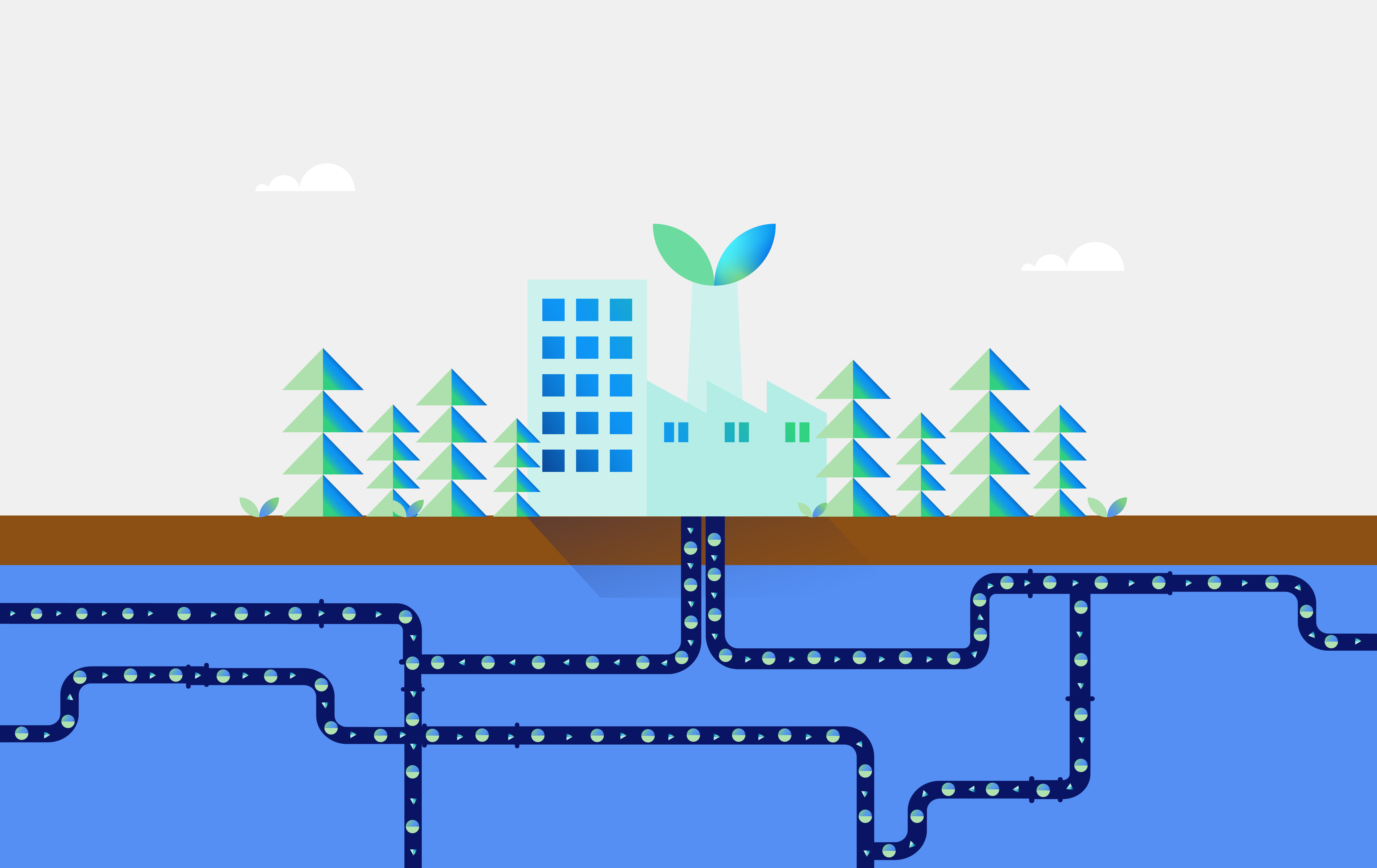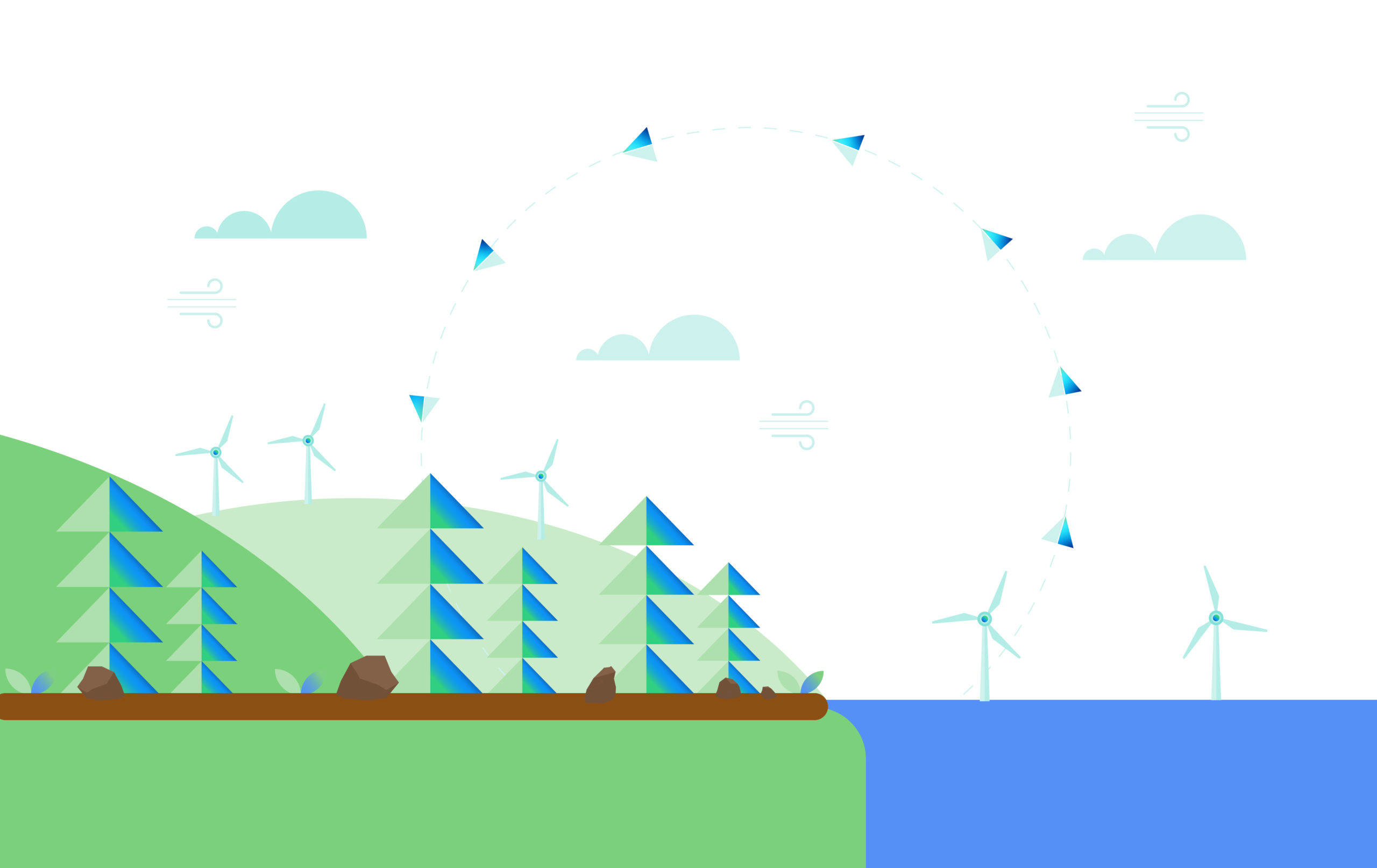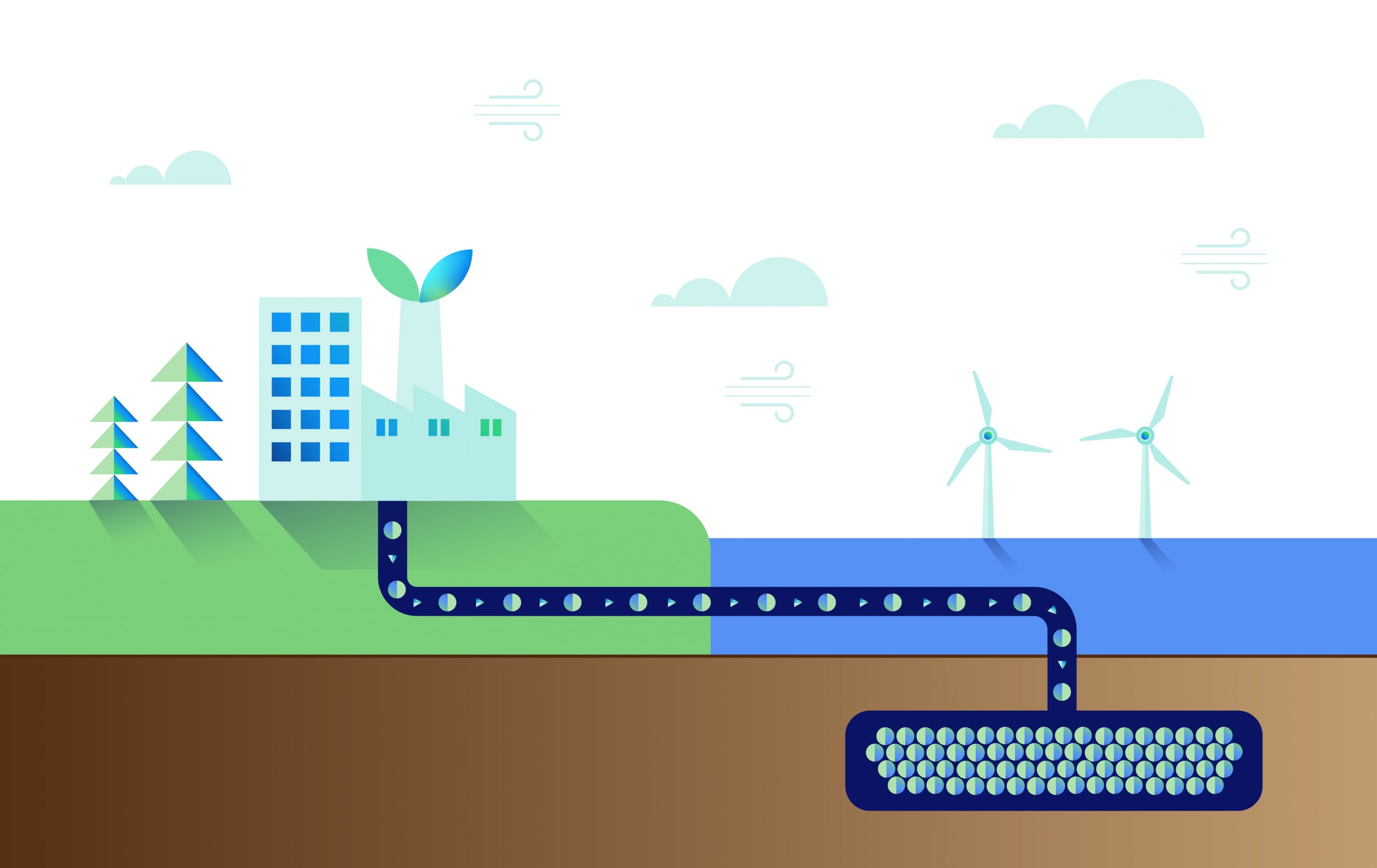
What is carbon transportation?
Carbon transportation is the movement of carbon from one place to another. In nature, carbon moves through the carbon cycle. In industries like energy, however, carbon transportation refers to the physical transfer of carbon dioxide (CO2) emissions from the point of capture to the point of usage or storage.
Why does carbon need to be transported?
Anthropogenic (man-made) CO2 released in processes like power generation leads to the direct increase of CO2 in the atmosphere and contributes to global warming.
However, these emissions can be captured as part of carbon capture and storage (CCS). The CO2 is then transported for safe and permanent storage in geological formations deep underground.
Capturing and storing CO2 prevents it from entering the atmosphere and contributing to global warming. Processes that can deliver negative emissions – such as bioenergy with carbon capture and storage (BECCS) and direct air capture and storage (DACS) – aim to permanently remove CO2 from the atmosphere through CCS.
In CCS, carbon must be transported from the site where it’s captured to a site where it can be permanently stored. This means it needs to travel from a power station or factory to a geological formation like a saline aquifer or depleted oil and gas reservoirs.
As of September 2021, there were 27 operational CCS facilities around the world, with the combined capacity to capture around 40 million tonnes per annum (Mtpa) of CO2. It’s estimated that the UK alone has 70 billion tonnes of potential CO2 storage space in sandstone rock formations under the North Sea.

How is carbon transported?
CO2 can be transported via trucks or ships, but the most common and efficient method is by pipeline. Moving gases of any kind through pipelines is based on pressure. Gases travel from areas of high pressure to areas of low pressure. Compressing gas to a high pressure allows it to flow to other locations.
Gas pipelines are common all around the world, including those transporting CO2. In the US there are, for instance, more than 50 CO2 pipelines – covering around 6,500 km and transporting approximately 68 million tonnes of CO2 a year.
Gas takes up less volume when it’s compressed, and even less when it is liquefied, solidified, or hydrated. Therefore, before being transported, captured CO2 is often compressed and liquefied until it becomes a supercritical fluid.
In a supercritical state, CO2 has the density of a liquid but the viscosity (thickness) of a gas and is, therefore, easier to transport through pipelines. It’s also 50-80% less dense than water, with a viscosity that is 100 times lower than liquid.
This means it can be loaded onto ships in greater quantities and that there is less friction when it’s moving through pipes and, subsequently, into geological storage sites.
How safe is it to transport carbon?
It’s no riskier to transport CO2 via pipeline or ship than it is to transport oil and natural gas, and existing oil and natural gas pipelines can be repurposed to transport CO2.
To enable the safe use of CO2 pipelines, CCS projects must ensure captured CO2 complies with strict purity and temperature specifications, as well as making sure CO2 is dry and free from impurities that could impact pipelines’ operations.
Whilst there are a growing number of CCS transport systems around the world, CCS is still is a relatively new field but research is underway to identify best practises, materials and technologies to optimise the process. This includes research around potential risks and techniques for leak mitigation and remediation.
In the UK, the Health and Safety Executive regulates health, safety, and integrity issues for all natural gas pipelines, which are covered by legislation. The legislation ensures the safety of pipelines, pressure systems and offshore installations and can serve as a strong foundation for CO2 transport regulation.
Fast facts
- Globally, CCS projects have been operational since the 1980s, with more than 260 million tonnes of CO2 being captured and stored over 40 years.
- The global capacity of CCS projects in development in September 2021 was 111 million tonnes per year. This was a 48% increase compared to the end of 2020
- The UK’s existing gas transmission network is made up of some 7,660 km of high-pressure gas pipelines
- The price of reusing offshore oil and gas pipelines to transport CO2 could be just 1% to 10% of the cost of building a new pipeline
Go deeper
- Catch up on how a range of carbon capture, transport, and storage projects around the world are progressing.
- Here are the details of five proposed carbon capture projects in the UK.
- Read the full story of how carbon is captured, transported, and stored.
- How governments can implement the policies needed to enable CCS at scale.













